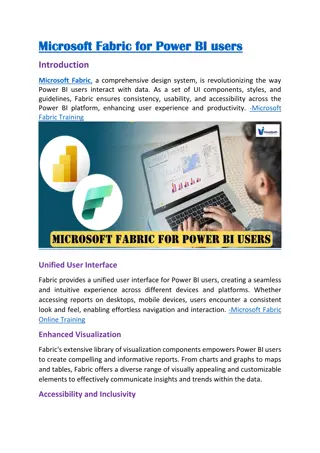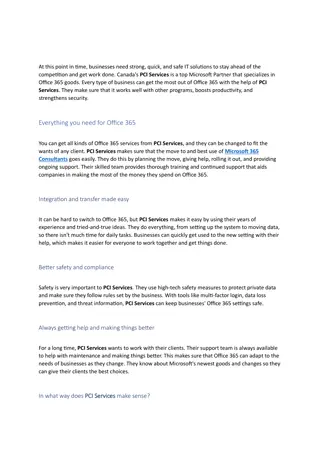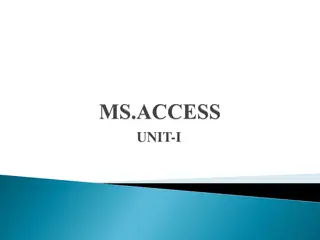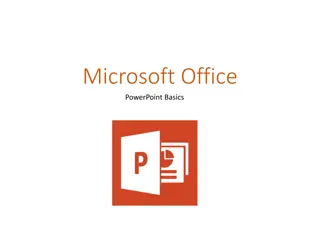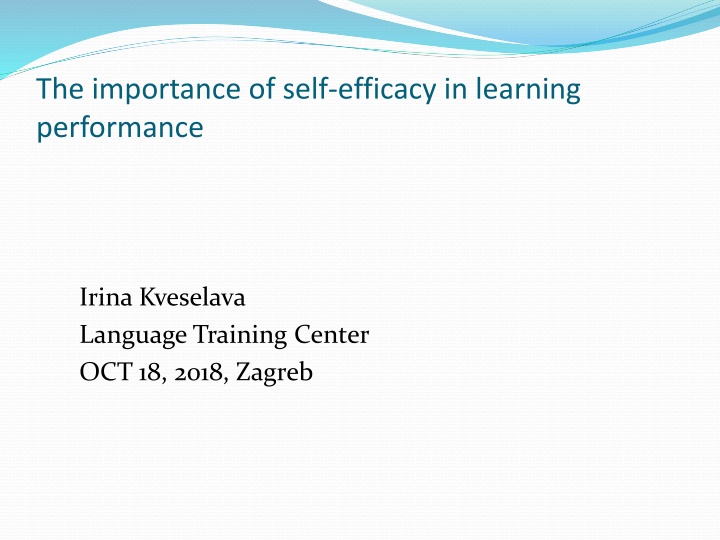
Strategies to Enhance Self-Efficacy in Learning Performance
Explore the significance of self-efficacy in learning performance and discover six effective strategies to promote self-efficacy, including task accomplishment, peer modeling, goal setting, and more. Learn how self-efficacy influences motivation and student beliefs, with insights on creating optimal learning challenges for improved outcomes.
Download Presentation

Please find below an Image/Link to download the presentation.
The content on the website is provided AS IS for your information and personal use only. It may not be sold, licensed, or shared on other websites without obtaining consent from the author. If you encounter any issues during the download, it is possible that the publisher has removed the file from their server.
You are allowed to download the files provided on this website for personal or commercial use, subject to the condition that they are used lawfully. All files are the property of their respective owners.
The content on the website is provided AS IS for your information and personal use only. It may not be sold, licensed, or shared on other websites without obtaining consent from the author.
E N D
Presentation Transcript
The importance of self-efficacy in learning performance Irina Kveselava Language Training Center OCT 18, 2018, Zagreb
Self-efficacy feeds motivation Say no to I can not
The importance of self-efficacy in learning performance Six strategies of self-efficacy in teaching foreign languages 1 Self-efficacy as an important tool for motivation 2 Motivational strategies 3
Students self-efficacy beliefs are based on: Prior task accomplishments, and whether success is interpreted through a growth or fixed mindset Seeing a model perform the task or activity (because students develop an expectation that they too can acquire the skill) Teacher expectations and verbal persuasion The amount of support students can expect from teachers and peers Physical symptoms such as anxiety 0r students with low self-efficacy are more likely to experience achievement anxiety
Six strategies that can promote self-efficacy Task accomplishment and success 1. 2. Peer modeling 3. Goals and feedback 4. Use self-assessment 5. Give daily problem-solving opportunities 6. Support students affirmation
Task accomplishment and success Ensure an optimal level of challenge including: Scaffolding Giving plenty of time Deconstructing larger tasks into smaller steps Build concepts gradually and ensure success at each step Explain the concept or strategy thoroughly to ensure balancing the difficulty of tasks
Task accomplishment and success Foster a co-operative social environment Allow students to work together Encourage them to build on one another s responses and help each other Use instructional practices based on class discussion and small group work
Task accomplishment and success Ask students to develop and justify their own solutions Use every answer to ask students explain their thinking Allow multiple solutions to problems This supports students sense of autonomy and allows them many opportunities to demonstrate competence
Peer Modeling Coping model: I am not sure I can do Mystery model: I am good at this or That was easy
Peer Modeling be wary of influential students who offer themselves as mystery models if no mistakes are made , ask questions about how they worked out the challenges in order to elicit coping strategies alternatively, you might act as a coping model yourself or make empathetic statements such as At this point, you might be getting confused or you might believe you ve gone wrong .
Goals and feedback Encourage students to compare present performances against goals and previous performances Convey tasks and activities as goals to be accomplished; then frame completion as success Help identify any obstacles they foresee to accomplishing the goal Help them brainstorm potential strategies to use Give specific instruction in goal setting; give general goal and discuss how to revise it so it is specific and realistic; break it into subset of smaller goals Have students write goals, then in pairs try to revise and improve them
Goals and feedback Make feedback frequent , elaborative and positive Offer feedback emphasizing goal progress and highlighting personal capacities in order to increase students self-efficacy Examine their thinking processes to ascertain why they misunderstood Use this opportunity to re-teach or clarify, so as to further support students efficacy Focus on effort and strategies in attributing the reason for success Teach students to expect to make mistakes and treat mistakes as opportunities to learn and gain useful feedback from others
Use self-assessment Have students write comments or questions in the last few minutes of class; address this the next day Tell students every day how they are progressing and what they learned the day before
Give daily problem-solving opportunities Help students learn how to explain why they are doing something; ask them to explain to class, each other and have pair questions Use questions that foster thinking and that ask students to justify their thinking Rather than expect students to reinterpret difficulty or failure in an optimistic way they might be better able to accept difficulties if they have affirmed other aspects of self which sense of self- efficacy.
Support students affirmation Affirm students personal adequacy by having them write self- affirming statements Affirmations of values remind students of their higher goals, deeper values and the most importantly for self-efficacy. Highlight credible evidence of students personal adequacy and efficacy
Why is self-efficacy so important? Self-efficacy beliefs can influence one s decisions, expended effort and perseverance; Resilience to adversity, thought processes affective states and importantly, accomplishments In other words, the higher a learner s self-efficacy, the higher his/her likelihood to succeed in accomplishment of a task seems to be.
Why is self-efficacy so important? The implication for foreign language teaching and learning is obvious If we focus our efforts consciously and consistently on enhancing MFL students self- efficacy across the four language skills we may be able to increase their motivation Teachers should plan carefully for self-efficacy, especially at the early stages of instructions with less able students The greatest challenge is to strike a balance between providing sufficient opportunities for success whilst not lowering the expectation too much
Self-efficacy feeds motivation; motivational strategies Motivaion: a factor or circumstance that induces a person press to act in a particular way Motivate: supply a motive to: be the motive off; cause (a person) to act in a particular way; stimulate the interest (of a person in an activity)
Self-efficacy feeds motivation; motivational strategies Main types of motivational strategies Generating initial motivation Creating the basic motivational conditions Adopting appropriate teacher behavior and establishing rapport with the students Creating a pleasant and safe classroom atmosphere Creating a cohesive learner group Enhancing the learners language-related values and attitudes Focus on integrativeness Focus on the anticipated intrinsic pleasure of learning Focus on instrumental incentives
Self-efficacy feeds motivation; motivational strategies Making the curriculum relevant for the learners Increasing the learners expectancy of success Maintaining and protecting motivation Helping learners to set appropriate (proximal and specific) sub goals for themselves Increasing the quality of the learning experience Increasing the learners self-confidence Providing regular experiences of success Reducing classroom anxiety
Self-efficacy feeds motivation; motivational strategies Promoting favorable self-conceptions of foreign language learning competence Creating learner autonomy Adopting an active socializing role (by the teacher) Raising the learners awareness of motivation maintenance strategies Emotion control Motivation control Environmental control Rounding off the learning experience: Encouraging positive self evaluation Promoting attributions to effort rather than to ability Increasing learner satisfaction
Conclusion Say no to I can t





